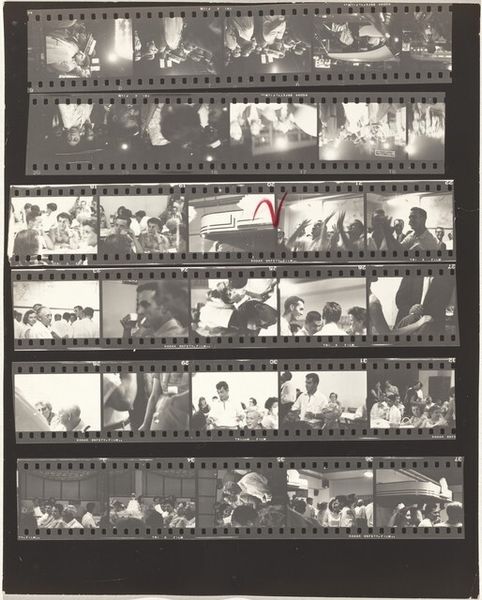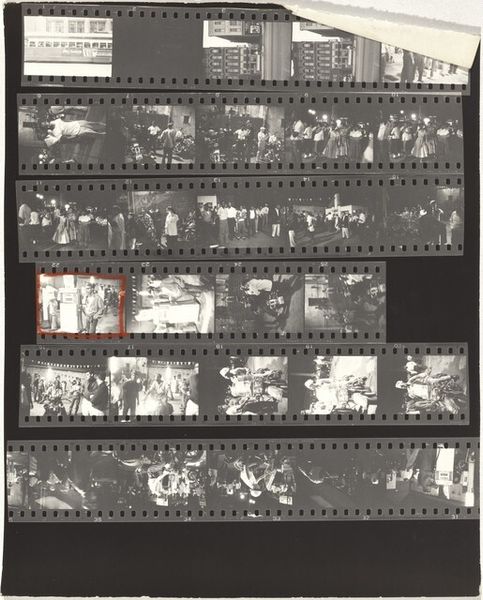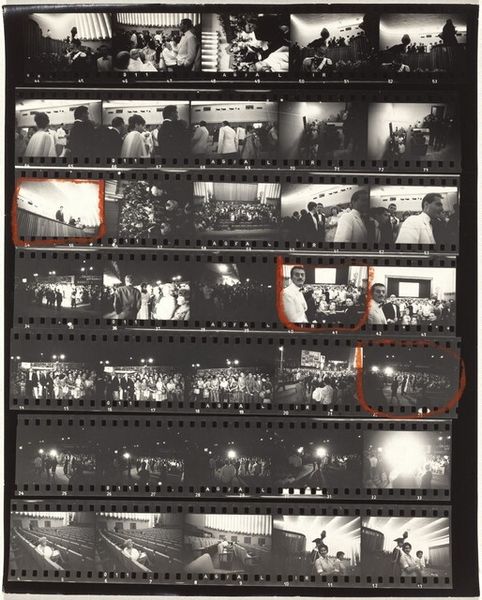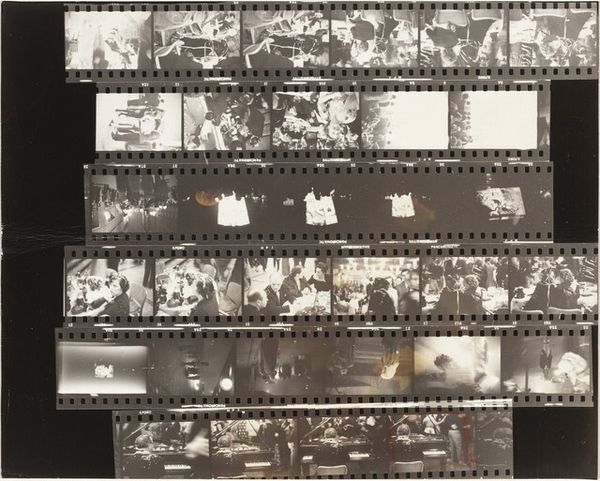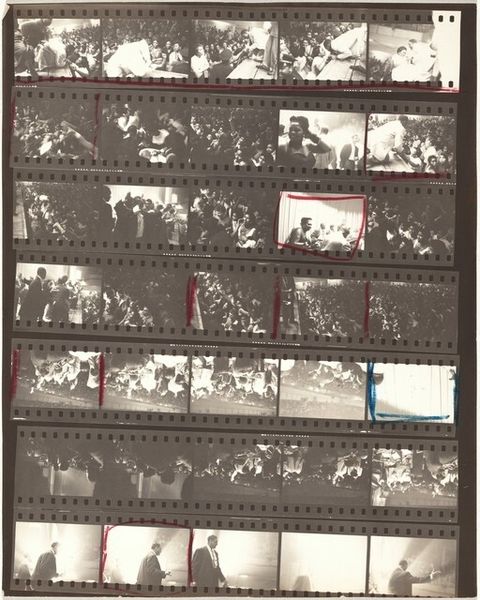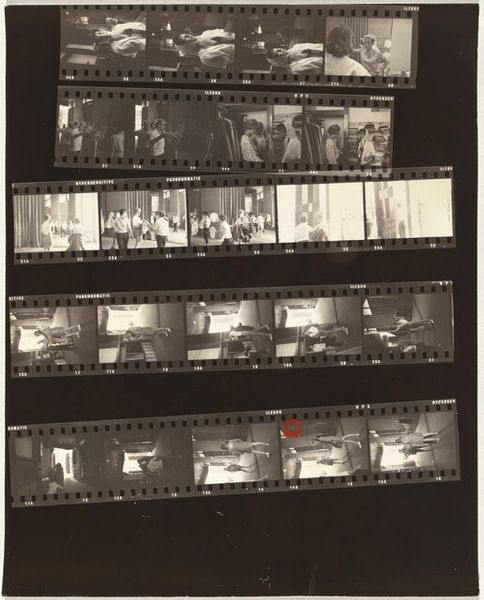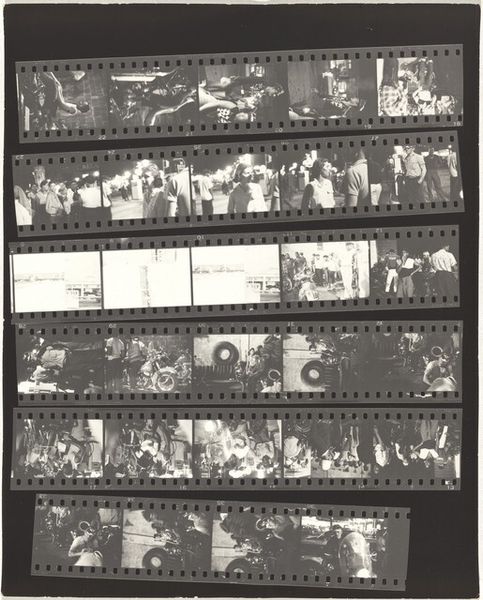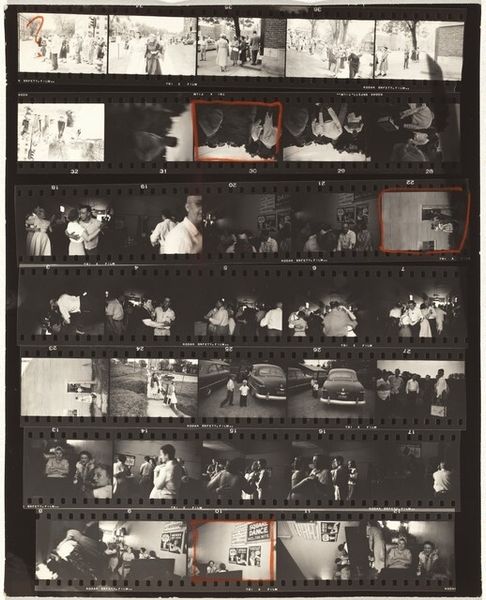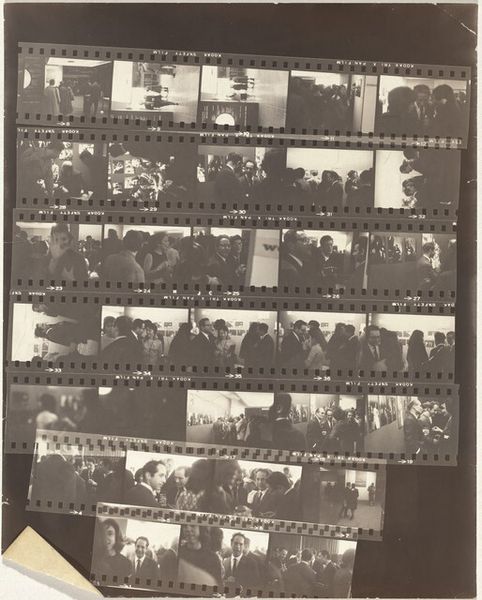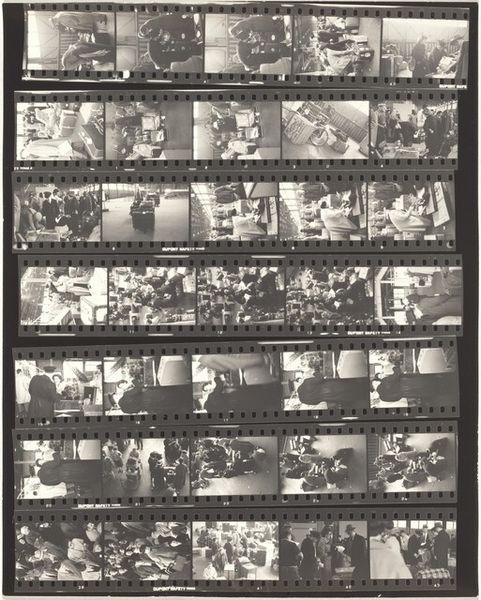
Dimensions: overall: 25.3 x 20.3 cm (9 15/16 x 8 in.)
Copyright: National Gallery of Art: CC0 1.0
Curator: This is Robert Frank's "Guggenheim 43/Detroit 1," a gelatin silver print made in 1955. It presents a contact sheet of small images, a glimpse into the photographic process itself. Editor: The first impression? Grainy poetry. It’s like holding a faded memory reel. I get a sense of voyeurism… and a dash of mundane. Curator: Precisely. Frank’s work is key to understanding postwar America. He critiqued consumerism and explored themes of alienation. Think about how institutions like the Guggenheim influenced the reception of street photography at the time. Editor: Right. But look at the images themselves: blurred faces, snippets of conversations. Each little square a stolen moment. And the contrast…the darks seem to bleed into the lights, creating this unease. Does anyone really know their place? Curator: Absolutely. The imperfections highlight his departure from the polished aesthetics of mainstream photography and it does echo the sense of disillusionment present within this period. Editor: Though the repetition interests me. What can this seemingly haphazard arrangement possibly unveil about the subjects within them? Curator: His vision offered an unvarnished view, questioning established social structures. How these very structures contributed to a society not knowing exactly what their purpose was. Editor: Still, it has the allure of film noir. I’m oddly drawn to these blurred ghosts caught within the frame. Are they happy? Indifferent? Or am I merely projecting onto them what they should've looked like? Curator: Frank intentionally blurred lines to evoke an emotion of truth through the eyes of photography. This piece is less a collection of pictures than an honest, albeit ambiguous, cultural critique. Editor: I see that. Maybe he wanted us to feel this way – lost in a world of fragmented realities. It truly leaves you thinking. Curator: It does. Photography is more than a tool for documenting what *is*. Here, it makes a statement for what's been left behind.
Comments
No comments
Be the first to comment and join the conversation on the ultimate creative platform.
